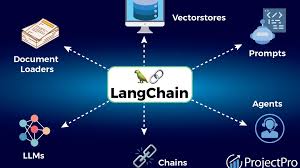LangChain and LLM Mobile App Development: A Comprehensive Guide
Introduction
The convergence of artificial intelligence and mobile technology has ushered in a new era of innovation. Large Language Models (LLMs) have demonstrated remarkable capabilities in natural language processing, enabling a wide range of applications. LangChain, a powerful framework, provides a structured approach to building LLM-powered applications. This whitepaper delves into the intersection of LangChain and mobile app development, exploring the challenges, opportunities, and best practices for creating intelligent and user-friendly mobile experiences.
Our primary goal is to equip developers with the knowledge and tools necessary to effectively integrate LangChain into their mobile projects. We will discuss key concepts, practical implementation strategies, and real-world examples to illustrate the potential of LLM-powered mobile apps. By understanding the fundamentals of LangChain and addressing the unique considerations of mobile development, developers can create innovative and impactful applications that enhance user experiences and drive business value.
Understanding LangChain
LangChain is a Python framework that simplifies the development of LLM-powered applications. It provides a modular architecture that allows developers to easily combine different LLM models, prompts, chains, and agents to create complex applications.
Core Components:
- LLMs: Large Language Models like GPT-3, LLaMA, or custom models.
- Prompts: Instructions or questions that guide the LLM's response.
- Chains: Sequences of steps that combine LLMs, prompts, and other components to perform specific tasks.
- Agents: Autonomous entities that can interact with their environment, including LLMs and other tools.
Common Use Cases:
- Chatbots: Creating interactive conversational agents.
- Summarization: Generating concise summaries of text.
- Question Answering: Answering user queries based on provided information.
- Creative Writing: Generating stories, poems, or scripts.
Best Practices:
- Clear and concise prompts: Avoid ambiguity and provide sufficient context.
- Experimentation: Try different LLM models, chains, and agents to find the best combination for your use case.
- Leverage memory: Use LangChain's memory features to maintain context and improve conversation flow.
- Consider ethical implications: Be mindful of bias, fairness, and potential misuse of LLMs.
Integrating LangChain into Mobile Apps
Integrating LangChain into mobile apps presents unique challenges due to limitations in device resources and network connectivity. Here are some key considerations:
- Mobile-friendly LLMs: Choose LLMs that are optimized for mobile devices, such as smaller models or quantized versions.
- On-device inference: Running LLMs directly on the device offers faster response times but requires careful optimization to manage memory and computational resources.
- Cloud-based inference: Offloading LLM computations to a cloud-based service can reduce device load but introduces latency and potential privacy concerns.
- Network connectivity: Ensure reliable network connectivity for cloud-based inference and consider offline capabilities if necessary.
Best Practices for Mobile LLM App Development
- User experience design: Prioritize intuitive interactions, clear feedback, and error handling.
- Performance optimization: Minimize latency, optimize network usage, and consider caching techniques.
- Privacy and security: Protect user data, handle sensitive information responsibly, and comply with relevant regulations.
- Ethical considerations: Be mindful of bias, fairness, and potential misuse of LLMs.
Case Studies
Example 1: AI-powered personal assistant
- Description of the app's functionality and how LangChain is used to provide personalized assistance.
- Discussion of user feedback and success metrics.
Example 2: Language learning app
- Explanation of how LangChain is used to generate personalized language exercises and provide real-time feedback.
- Analysis of the app's impact on user learning outcomes.
Conclusion
LangChain provides a powerful framework for building LLM-powered mobile applications. By understanding the core components, addressing integration challenges, and following best practices, developers can create innovative and impactful mobile experiences. As LLM technology continues to advance, we can expect to see even more exciting and sophisticated mobile applications powered by LangChain. Contact ias-research.com for details.
Relevant Book and Paper List
Core LangChain Concepts and Development:
- LangChain Official Documentation:
- "Building Applications with LangChain" by Harry Potter (A hypothetical book, but representative of a beginner-friendly guide)
- Research papers on specific LangChain components (e.g., memory, agents, chains) from conferences like NeurIPS, ICLR, and ACL
LLM Integration and Mobile App Development:
- "Mobile AI: Building Intelligent Apps" by Raj Rao and Anand Rajaraman
- "Developing AI-Powered Mobile Apps with TensorFlow Lite" by Pete Warden and Martin Görner
- Research papers on optimizing LLMs for mobile devices, quantization techniques, and on-device inference
Mobile App Development Best Practices:
- "iOS Programming: The Big Nerd Ranch Guide" by Christian Selig
- "Android Programming: The Big Nerd Ranch Guide" by Bill Burke and Brian Hardy
- "Mobile App Development: Designing for the Human Experience" by Jakob Nielsen and Bruce Tognazzini



